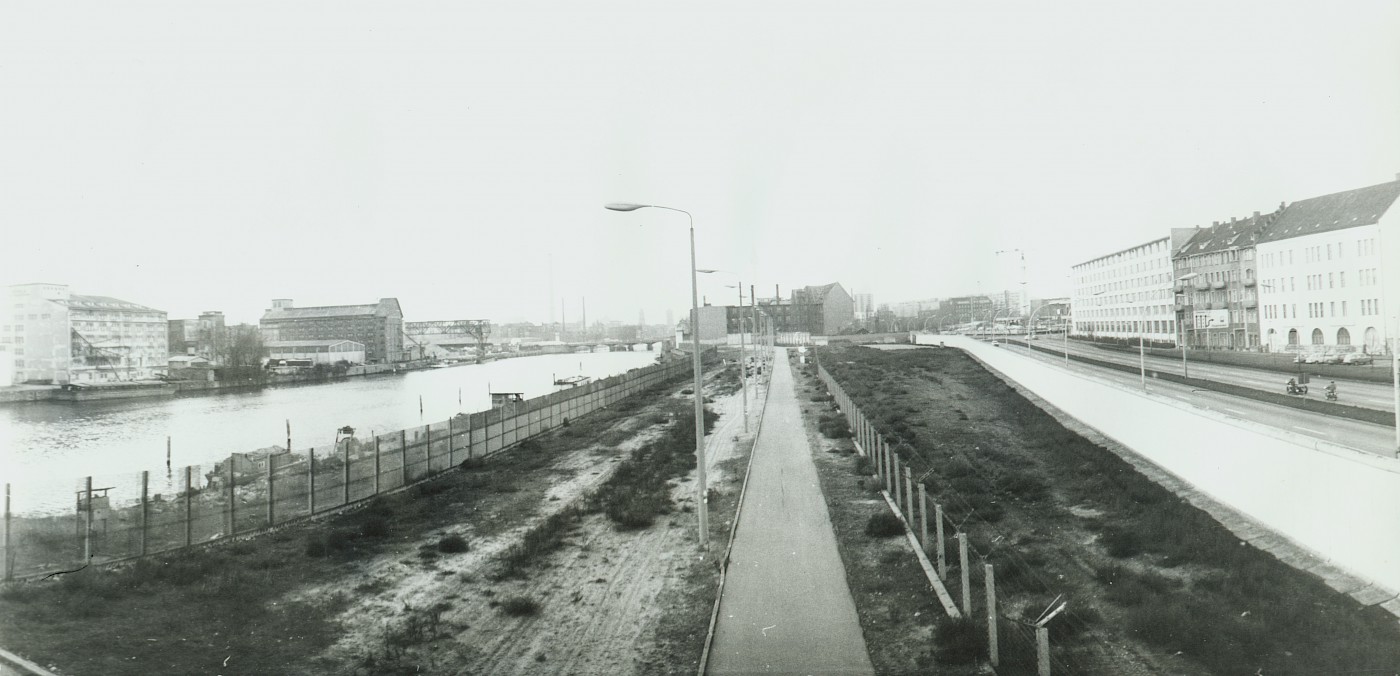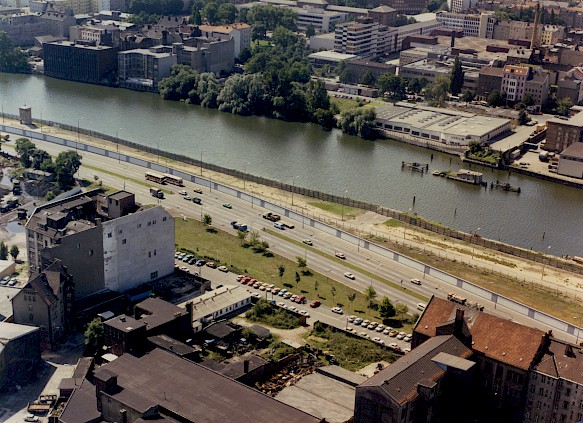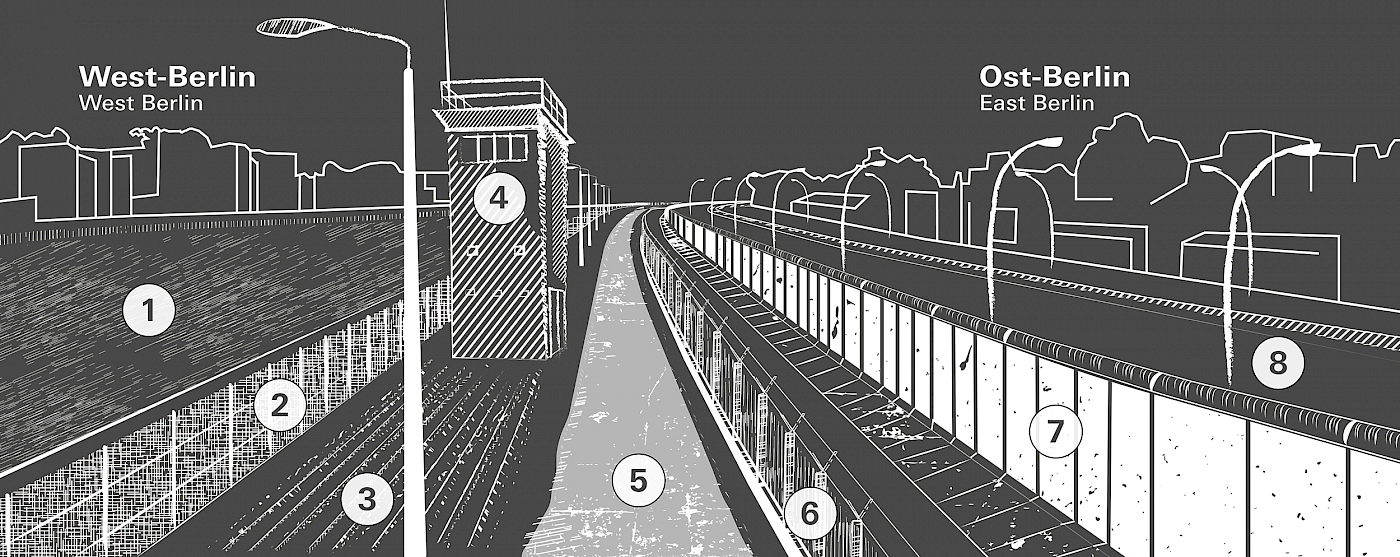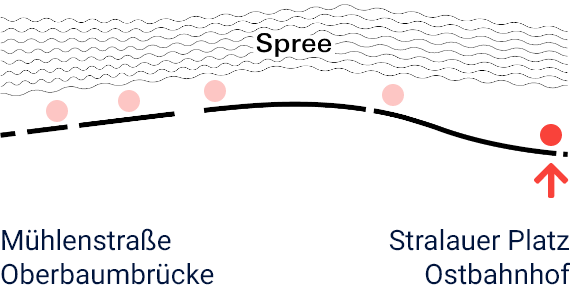EastSideGallery
ArtontheWall
Colourful paintings appeared on a wall that had previously been part of a tightly guarded border: When the Berlin Wall was opened in November 1989, the border stopped being a danger zone. In spring 1990, the GDR government authorised an art action planned at the Wall – and the East Side Gallery was born. 118 artists from21 countries painted pictures on the Wall that expressed their joy,fears, and hopes at the time. In a wide variety of styles and images, the pictures convey not only the sense of possibility but also the concern about the future that characterised 1990. Being an artistic testimony to a unique moment and the longest remaining part of the Berlin Wall, the East Side Gallery was listed as a historical monument in 1991. But that did not ensure it was preserved intact. Parts of the Gallery were removed to allow construction along the Spree. The gaps cut into the monument are the outcome of years of negotiations between the Berlin Monument Authority and urban planners.
The Berlin Wall

In 1961 the East German government had a wall built around West Berlin to stop people escaping from the GDR. The initially makeshift border installations,consisting of barbed wire, fences, and walls, were gradually built up over the following years. Here on Mühlenstraße, the last buildings along the riverbank were demolished in the late 1970s and the border area cleared. Between the Wall and the river there was now a border strip that was brightly lit and secured by more fences. GDR border soldiers patrolled the strip and guarded the border here from three watchtowers and from the Spree. In the period from 1961 to 1989, 13 people died in this section of the river: seven men trying to escape from East Berlin, two men not attempting to escape, and four children from West Berlin, who fell into the water, and nobody saved them from drowning.



 Leichte Sprache
Leichte Sprache